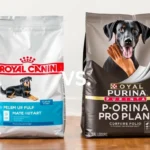
Dog nutrition is a critical aspect of pet ownership, as it directly impacts the overall health and well-being of our furry companions. Proper nutrition goes beyond just filling a bowl; it involves understanding the ingredients that make up commercial dog foods and treats. One ingredient that often raises questions among dog owners is glycerin.
Understanding Glycerin
What is Glycerin?
Glycerin, also known as glycerol, is a colorless, odorless liquid that is sweet-tasting and non-toxic. It is derived from both natural sources, such as fats and oils, and can also be produced synthetically. In the food industry, glycerin is commonly used as a sweetener, humectant, and preservative.
How Glycerin is Used in Dog Food
In dog food and treats, glycerin serves several purposes. Primarily, it acts as a humectant, which means it helps retain moisture in the product. This is particularly important for preserving the texture and palatability of soft treats and kibble. Glycerin can also enhance the shelf life of these products, preventing them from drying out or becoming stale.
Some examples of dog treats that commonly contain glycerin include soft chews, meat-based treats, and some types of dental chews. While it can be beneficial in maintaining product quality, understanding its implications for your dog’s diet is essential.
Nutritional Value of Glycerin
Caloric Content
Glycerin contains approximately 4.3 calories per gram. While it is a carbohydrate, it doesn’t have the same impact as traditional grains or sugars in a dog’s diet. This is because glycerin is metabolized differently in the body. It provides a quick source of energy, but it is often used in smaller quantities compared to other carbohydrate sources.
When assessing your dog’s overall diet, it’s important to consider the caloric contribution of glycerin alongside other ingredients. In moderation, glycerin can fit into a balanced diet, but it should not be the primary source of calories.
Digestibility
Glycerin is generally considered to be easily digestible for dogs. Once ingested, it is absorbed in the gastrointestinal tract and can be utilized for energy. However, excessive amounts can lead to digestive upset, as with any food ingredient. Understanding how glycerin fits into your dog’s diet can help you make informed decisions about their nutrition.
Safety and Health Concerns
Is Glycerin Safe for Dogs?
The safety of glycerin for dogs has been supported by various studies and expert opinions. It is recognized as safe for consumption in regulated amounts by organizations such as the Association of American Feed Control Officials (AAFCO). Many veterinarians and pet nutritionists agree that glycerin poses little risk when included in dog food and treats, especially when sourced from reputable manufacturers.
Potential Risks Associated with Glycerin
While glycerin is generally safe, there are potential risks to be aware of. Some dogs may have allergic reactions or sensitivities to glycerin, which could result in gastrointestinal issues or skin irritations. Moreover, excessive consumption of glycerin could lead to diarrhea or an upset stomach, particularly in dogs with sensitive digestive systems.
It’s crucial to understand the context in which glycerin is used. Many lower-quality dog foods and treats may contain glycerin as a filler ingredient, which could indicate a lack of high-quality protein sources and whole food ingredients. Always evaluate the overall quality of the food or treat before making a purchase.
Alternatives to Glycerin in Dog Food
Natural Alternatives
For pet owners looking to avoid glycerin, there are several natural alternatives available. Ingredients such as honey, molasses, and vegetable purees can serve similar purposes as humectants and sweeteners. These options not only help to retain moisture but also provide additional nutrients that can enhance the overall quality of the food.
Incorporating whole food ingredients into your dog’s diet is crucial. Whole meats, vegetables, and grains can provide essential nutrients without relying on additives like glycerin.
Evaluating Dog Food Ingredients
When shopping for dog food, it’s essential to read labels carefully. Look for products that list high-quality, whole food ingredients at the top of the ingredient list. Ingredients such as real meat, vegetables, and whole grains should be prioritized over fillers and additives like glycerin.
Familiarize yourself with the ingredients your dog consumes regularly. This awareness will help you make better choices for their nutritional needs and overall health.
Expert Opinions and Recommendations
Veterinarian Insights
Many veterinarians recommend being cautious about the types of treats and foods you choose for your dog. While glycerin is safe in moderation, it’s essential to understand that not all dog foods are created equal. Some brands may prioritize quality over the use of fillers and additives, leading to better overall nutrition for your dog.
Veterinarians often suggest consulting with a professional to determine the best diet for your dog’s specific needs. If you have concerns about glycerin or any other ingredient, discussing these with your vet can provide clarity and peace of mind.
Pet Nutritionists’ Views
Pet nutritionists emphasize the importance of providing a balanced diet for dogs, one that includes a variety of nutrients from high-quality sources. Glycerin can play a role in certain treats but should not be a primary ingredient. They recommend focusing on whole food ingredients and being cautious of overly processed products.
Healthy dog treats can be homemade or store-bought, as long as they are made from quality ingredients. Look for treats that contain real meat, fruits, and vegetables, and are free from unnecessary additives, including glycerin.
Conclusion
The question of whether glycerin in dog food and treats is bad for dogs ultimately depends on several factors, including the quality of the product and the individual dog’s dietary needs. While glycerin is generally considered safe, it is essential to be mindful of the overall ingredients in your dog’s diet.
In summary, glycerin can be a useful ingredient in moderation, but pet owners should prioritize high-quality foods and treats that provide complete nutrition without relying heavily on fillers. Consulting with veterinarians and pet nutritionists can help you navigate the complexities of dog nutrition and ensure you are making informed choices for your pet’s health.
By being proactive and informed about what goes into your dog’s food, you can contribute to their overall well-being and happiness.









